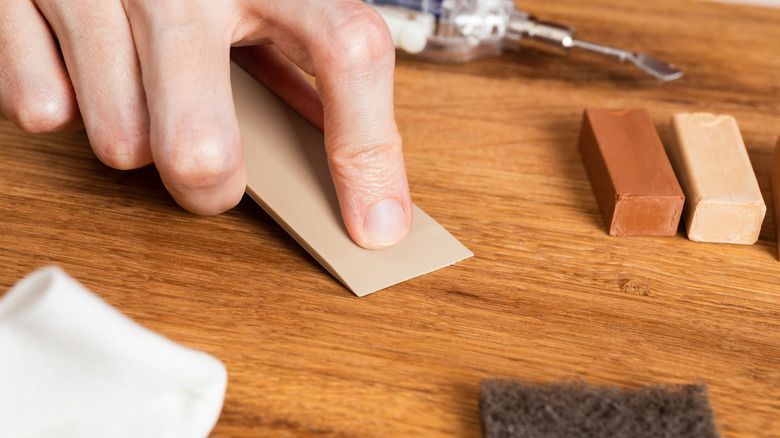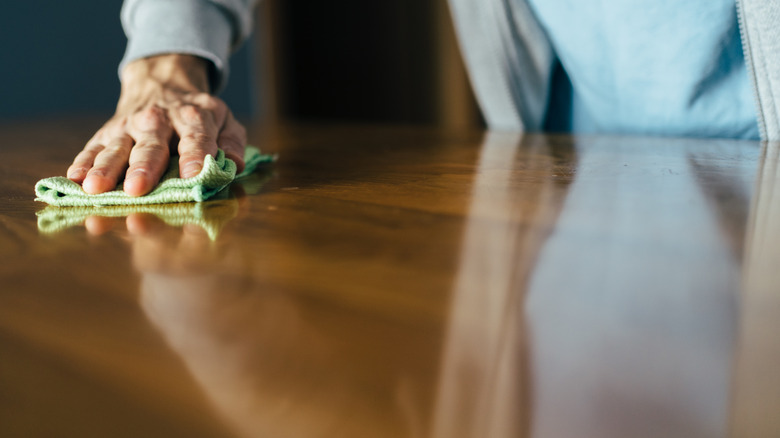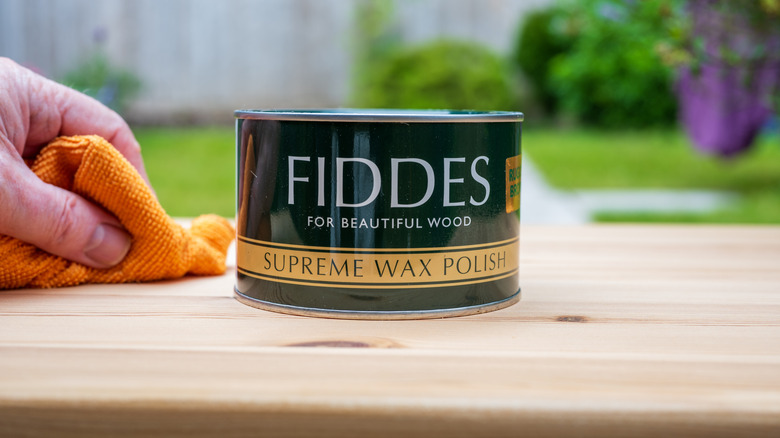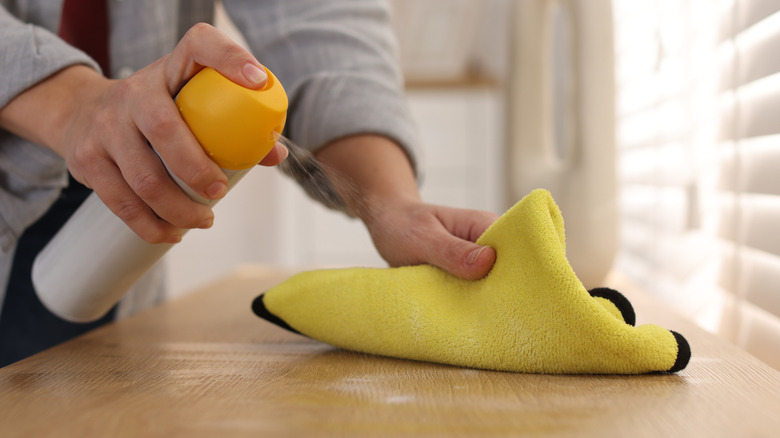3 Simple Tricks To Keep Your Wooden Furniture In Tip-Top Shape For Years To Come
Given that I'm a professional woodworker, it's no secret that I love wooden furniture. Especially wooden furniture that is not painted and features the beauty of the wood's natural grain. It is true that in the "olden times," furniture was almost exclusively made from wood because that was basically the only material we had to work with — after all, we made almost everything from wood back then, including shoes and dinnerware — but in my opinion, even with the panoply of products available to us today, wooden furniture remains the premier type on the market today. Wood brings the beauty of nature into our homes, is an environmentally-friendly material choice, and continues a tradition of design and innovation worthy of our respect.
The one problem this great material presents, which its plastic or metal cousins don't have to worry as much about, is that being the proud owner of a great wooden furniture piece also means being vigilant about protecting the finish from scratches and deterioration. The finishes that protect the wood fibers, while durable, are not indestructible. The good news: I have three effective tricks from the woodworker's playbook that will make your life easier.
Feed your furniture's wood finish
Taking care of your wooden furniture, and preventing harm from happening to the finish, is obviously better than having to repair damage after the fact. If there are three products I would recommend to you on that score, from my professional experience, they are Howard's Feed N' Wax, Old English Lemon oil (it's not made from lemons) and Method Daily Wood Treatment. My personal favorite product for this is Howard's Feed N' Wax. Its oil and two-wax blend provides exceptional protection. I avoid aerosol spray wood polishes because of the volatiles needed to make the product easy to spray.
One claim that you will hear from the companies that make these products is that they are needed to "feed the wood" or "enhance the wood fibers." This, in my opinion, is well-meaning hyperbole, but the metaphor does get the point across. In reality, these products do indeed prevent the degradation of the finish and protect the wood fibers — exactly what you want them to do. But do the wood fibers change in some significant way after the application of these products? Nope. The products just make them look better and protect the oil finish or film coat, and that's exactly what you want.
These products do two important things. First, the oils (and waxes in some of them), flow into the small cracks and flaws in the existing finish. This helps lift dirt and detritus from those cracks. Second, they leave behind a protective residue that helps protect the finish from further breaking down, and — to a degree — fills those cracks, keeping dirt out. Further, the oils and waxes provide a lubricating layer that helps protect the finish from abrasive events (that is, things being rubbed across their surfaces).
Use paste wax on your wood furniture
Film coat finishes, lacquers, shellac, traditional varnishes, the various types of polyurethane finishes ... these are all products that provide excellent protection to wooden furniture. Think of a film finish as a thin layer of protection that lies on top of the wood's surface. It bonds to the wood and keeps dirt and damage away from the wood fibers. Over time, film finishes take a beating. Sunlight, with its infrared rays, breaks down the chemical structure of the finish. Alcohol and other liquids try to break through, sometimes causing the finish to break down, as well; these are seen as white water stains. Books, paper or other things sliding across the finish abrade the layer of finish. Such is the life of a film finish.
One of the easiest and yet most effective actions you can take to keep your furniture in tip-top shape is also one of the oldest tricks in the book: Applying a coat of paste wax. The wax works in a similar way to the polishes mentioned above, but the coating it provides is thicker and more durable than the polishes. My two favorite paste wax products are Liberon's Black Bison wax in its neutral formulation, and Bri Wax in its clear original formulation. Both are extremely high quality products that provide superior performance. To be honest, though, any paste wax is better than no paste wax. The older a piece of furniture is (and hence, the older its finish), the more beneficial a coat of paste wax will be for it. And yes, you can absolutely use the polishes over paste wax. A twice-yearly wax application will do your furniture a world of good.
Avoid damaging good intentions on your wood furniture
If you are using the wrong products, you can love your wooden furniture to death. Keeping your furniture clean is a good way to protect the finishes , for instance, but using a vinegar solution or one with ammonia in the mix will harm it instead. A mild soap and a damp cloth will work to clean a finish much better. If you've already put in the work to "feed your wood" and accepted that furniture polish is worth your time, don't ruin all that effort by using the wrong cleaning product!
At the same time, know that products like Feed N' Wax will clean as well as protect. Use a soft cloth — cotton is my preference, but micro-fiber clothes are good too. Avoid common paper towels as they can be abrasive and erode the finish slightly.
While keeping your wooden finish in tip-top condition does require a bit of work, those tasks can provide satisfaction in and of themselves, and you will you see the improvement as you polish. Follow each of my recommendations above and you'll be amazed by how well your wood furniture holds up over time.



